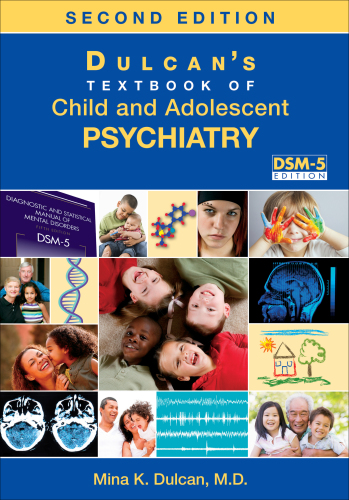1 1 Introduction This book is addressed primarily to physicians, and particularly to psychia- trists. Primary care physicians, pediatricians, gerontologists, and allied mental health professionals will likely also find it useful. One of our goals, however, is to reestablish the role of the psychiatrist as the leader of the team of profes- sionals providing mental health care to patients in need. The psychiatrist is able to function in this leadership role if he or she is skillful in generating a biopsychosocial formulation of presenting problems and in providing biopsychosocial treatments including pharmacotherapy, psychotherapy, and family interventions. Where such ability or interest in developing broadly based clinical expertise is lacking, psychiatrists are being relegated to supportive roles, most often as providers of psychopharmacolog- ical management. Psychiatrists are in a unique position in the mental health field, with the potential to become skillful in integrating biological, psychological, and social perspectives. They are medically based, trained in psychosocial and interper- sonal processes, and able to integrate information from disparate sources. This broad perspective is consistent with the historical underpinnings of psychiatry. Psychiatric theoreticians over the past hundred years have empha- sized biological, psychological, and familial processes. All psychiatrists do not 2 Clinical Manual of Couples and Family Therapy need to become psychotherapists or family therapists. All psychiatrists, how- ever, do need to be proficient in assessing a patient’s biological vulnerability to illness, the meaning of that illness to the patient and his or her ways of cop- ing with it, and the social/familial context in which that illness evolves. A comprehensive treatment plan can be designed only with such a thorough un- derstanding of the presenting problem. Even if a psychiatrist chooses to refer a patient to a psychotherapist or family therapist for more extensive therapy work, the psychiatrist still needs to know which kind of therapy is most likely to be helpful, be able to evaluate the quality and appropriateness of the ther- apies, and, most importantly, be able to integrate the therapy work into the comprehensive treatment plan. This book presents a conceptual framework for engaging families of pa- tients with psychiatric symptoms, problems, and disorders. We outline family therapy skills that are evidence based, skills that make it easier for clinicians to engage families effectively in the treatment process. The underlying assumption of the approach described in this book is that for the majority of people, psychiatric symptoms or illnesses evolve in a social context. Understanding the social context of the presenting problem is critical to biopsychosocial formulation and treatment planning. Families can be help- ful in identifying the history, precipitants, and likely future obstacles to the management of presenting problems. Families also play an important role, whether openly acknowledged or not, in the ongoing treatment process. Patients typically will spend anywhere from 10 to 50 minutes every few weeks to every few months with their psychiatrists. In contrast, patients will be with their significant others for a much greater time. It seems shortsighted not to try to engage those people in the therapeutic process who can be helpful or hurtful, supportive or undermining of treatment outside the therapist’s office. Unique features of this book are 1) an organizing method that provides a unifying framework throughout the book, 2) clarification of the clinical de- cision-making process involved in establishing the level and extent of family involvement in patient care in different clinical settings, and 3) emphasis on an ongoing biopsychosocial formulation. The overall approach is one that facilitates problem solving. The organiz- ing framework applied with all families, regardless of the presenting problem(s) or the clinical setting in which the patient is seen, consists of the following six stages: Introduction 3 1. Orientation: Why are we here? What do we expect will happen? 2. Assessment: What are the problems from everybody’s perspective? 3. Biopsychosocial formulation: Synthesis of the problems that is agreed to by the family and the therapist. 4. Contracting: What do you want to do about the identified problems? What has been stopping you? 5. Treatment: Work on agreed-upon tasks and assignments. Deal with ob- stacles and resistances to change.
چکیده فارسی
1 1 مقدمه این کتاب عمدتاً به پزشکان و به ویژه روانپزشکان میپردازد. پزشکان مراقبت های اولیه، متخصصان اطفال، متخصصان پیری، و متخصصان بهداشت روانی مرتبط نیز احتمالاً آن را مفید خواهند یافت. با این حال، یکی از اهداف ما این است که نقش روانپزشک را به عنوان رهبر تیمی از متخصصان که مراقبت های بهداشت روانی را به بیماران نیازمند ارائه می کنند، بازسازی کنیم. روانپزشک در صورتی می تواند در این نقش رهبری عمل کند که در ایجاد یک فرمول زیست روانی-اجتماعی از ارائه مشکلات و ارائه درمان های زیستی- روانی اجتماعی از جمله دارودرمانی، روان درمانی و مداخلات خانوادگی ماهر باشد. در جایی که چنین توانایی یا علاقه ای در توسعه تخصص بالینی مبتنی بر گسترده وجود نداشته باشد، روانپزشکان به نقش های حمایتی، اغلب به عنوان ارائه دهندگان مدیریت روان دارویی، تنزل داده می شوند. روانپزشکان در موقعیتی منحصر به فرد در زمینه سلامت روان قرار دارند و این پتانسیل را دارند که در ادغام دیدگاه های بیولوژیکی، روانشناختی و اجتماعی ماهر شوند. آنها مبتنی بر پزشکی هستند، در فرآیندهای روانی اجتماعی و بین فردی آموزش دیده اند و می توانند اطلاعات را از منابع متفاوت یکپارچه کنند. این دیدگاه گسترده با زیربنای تاریخی روانپزشکی سازگار است. نظریه پردازان روانپزشکی در طول صد سال گذشته بر فرآیندهای بیولوژیکی، روانی و خانوادگی تأکید کرده اند. همه روانپزشکان نیازی به رواندرمانگر یا خانوادهدرمانی ندارند. با این حال، همه روانپزشکان باید در ارزیابی آسیبپذیری بیولوژیکی بیمار نسبت به بیماری، معنای آن بیماری برای بیمار و روشهای مقابله با آن، و زمینه اجتماعی/خانوادگی که در آن بیماری وجود دارد، مهارت داشته باشند. بیماری تکامل می یابد یک طرح درمان جامع تنها با چنین درک کاملی از مشکل ارائه شده می تواند طراحی شود. حتی اگر روانپزشک تصمیم بگیرد که بیمار را برای کار درمانی گسترده تر به روان درمانگر یا خانواده درمانگر ارجاع دهد، روانپزشک هنوز باید بداند که کدام نوع درمانی بیشتر مفید است و بتواند کیفیت و مناسب بودن درمان را ارزیابی کند. میمون، و مهمتر از همه، قادر به ادغام کار درمانی در طرح درمان جامع است. این کتاب چارچوبی مفهومی برای درگیر کردن خانوادههای بیماران مبتلا به علائم، مشکلات و اختلالات روانپزشکی ارائه میکند. ما مهارتهای خانواده درمانی را که مبتنی بر شواهد هستند، بیان میکنیم، مهارتهایی که مشارکت مؤثر خانوادهها را برای پزشکان در فرآیند درمان آسانتر میکند. فرض اساسی رویکرد توصیف شده در این کتاب این است که برای اکثر مردم، علائم یا بیماری های روانپزشکی در یک زمینه اجتماعی تکامل می یابند. درک زمینه اجتماعی مشکل ارائه شده برای فرمول بندی زیستی-روانی اجتماعی و برنامه ریزی درمان حیاتی است. خانواده ها می توانند در شناسایی تاریخچه، عوامل ایجاد کننده و موانع احتمالی آینده برای مدیریت مشکلات کمک کننده باشند. خانواده ها نیز نقش مهمی را، خواه علناً تأیید کنند یا نه، در روند درمان مداوم ایفا می کنند. بیماران معمولاً بین 10 تا 50 دقیقه هر چند هفته تا چند ماه یکبار با روانپزشک خود می گذرانند. در مقابل، بیماران برای مدت زمان بیشتری در کنار افراد مهم خود خواهند بود. کوته فکری به نظر می رسد که سعی نکنیم آن دسته از افرادی را که می توانند کمک کننده یا آسیب رسان، حمایت کننده یا تضعیف کننده درمان خارج از مطب درمانگر باشند، در فرآیند درمانی درگیر کنیم. ویژگیهای منحصربهفرد این کتاب عبارتند از: 1) روش سازماندهی که چارچوبی وحدتبخش در سراسر کتاب ارائه میکند، 2) شفافسازی فرآیند تصمیمگیری بالینی درگیر در تعیین سطح و میزان مشارکت خانواده در مراقبت از بیمار در محیطهای بالینی مختلف، و 3) تاکید بر یک فرمول زیست روانی اجتماعی مداوم. رویکرد کلی رویکردی است که حل مسئله را تسهیل می کند. چارچوب سازماندهی که برای همه خانواده ها اعمال می شود، صرف نظر از مشکل(های) ارائه شده یا محیط بالینی که بیمار در آن دیده می شود، شامل شش مرحله زیر است: مقدمه 3 1. جهت گیری: چرا ما اینجا هستیم؟ انتظار داریم چه اتفاقی بیفتد؟ 2. ارزیابی: مشکلات از دیدگاه همه چیست؟ 3. فرمول زیست روانی-اجتماعی: ترکیبی از مشکلاتی که مورد توافق خانواده و درمانگر است. 4. قرارداد: در مورد مشکلات شناسایی شده چه می خواهید انجام دهید؟ چه چیزی مانع شما شده است؟ 5. درمان: روی وظایف و تکالیف توافق شده کار کنید. با موانع و مقاومت در برابر تغییر مقابله کنید.
ادامه ...
بستن ...
Publisher: American Psychiatric Publishing, Inc., Year: 2009
ISBN: 1585622907,9781585622900
ادامه ...
بستن ...










